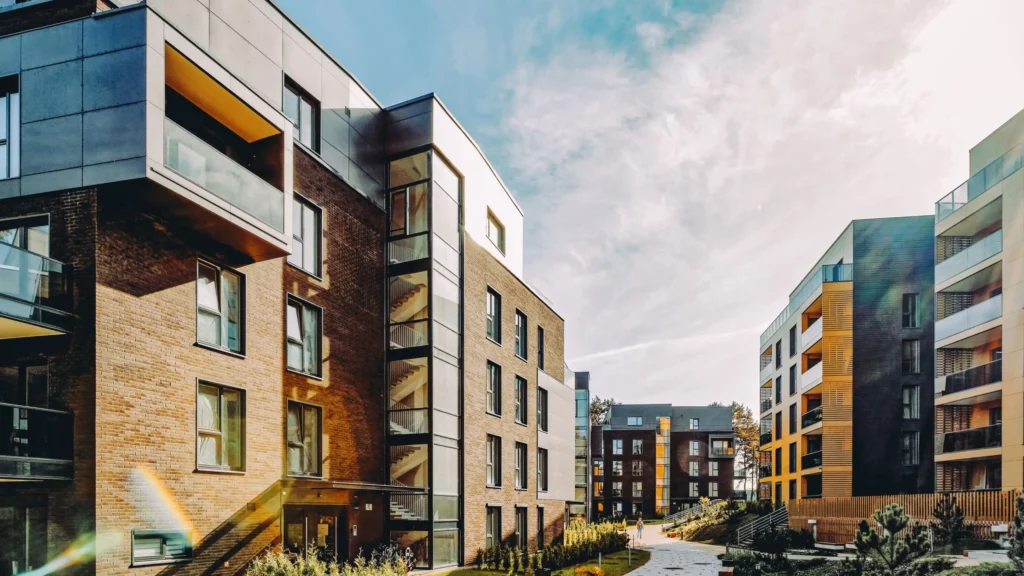Why I Invest in Multifamily Residential Apartments—And Why You Should Too

Real estate isn’t just a career for me—it’s a legacy. I grew up surrounded by it. My father was a builder who owned his own construction company, and every home we lived in was one he built from the ground up. I spent my childhood around job sites, learning how properties come together—from raw land to livable spaces. That early exposure gave me an intuitive understanding of real estate that has shaped every investment decision I’ve made since.
By the time I was in college, I had already started investing in rental properties. I learned firsthand how to manage tenants, handle maintenance issues, and evaluate the bottom line. Long before I ever transitioned into real estate full-time, I was already in the trenches—owning, operating, and optimizing properties.
In 2015, I made a strategic pivot into multifamily residential real estate, and I’ve never looked back. Since then, I’ve aggressively built and scaled a portfolio that includes dozens of multifamily units across several markets. I’ve managed everything from value-add repositioning to new construction, from garage-to-ADU conversions to rent stabilization strategies. This isn’t theory—it’s real work with real returns.
Today, multifamily is not just my preferred asset class—it’s the backbone of my real estate investment business and the core of how I help others build generational wealth.
Why Multifamily? Here’s What Years in the Game Have Taught Me:
1. Consistent Cash Flow and Risk Mitigation
I’ve seen the volatility of single-family rentals. One vacancy, and you’re at 0% occupancy. Multifamily mitigates that risk. Even when one or two units are down, the rest keep cash flowing. This has proven especially resilient during economic shifts, and it’s one of the key reasons I doubled down on multifamily after 2015.
2. Operational Efficiency
Managing 10 doors under one roof is vastly more efficient than managing 10 scattered homes. From property management to maintenance contracts, I’ve streamlined operations to drive down costs and scale up impact. In one multifamily project, we reduced expenses by 15% simply by consolidating vendors and standardizing renovations.
3. Forced Appreciation through Strategic Improvements
I’ve done everything from cosmetic rehabs to full-scale ADU additions. Multifamily gives me the ability to create value directly—renovate units, raise rents, reduce expenses, and grow NOI. One project stands out where a $150K renovation led to a $60K annual increase in NOI, boosting asset value by nearly $600K based on cap rates. In several properties, I’ve converted garages into studios or added backyard units—each unlocking new income streams and long-term equity gains.
4. Favorable Financing and Exit Flexibility
Multifamily is an income-producing asset class that banks understand. I’ve used that to my advantage—refinancing properties, pulling out equity, and rolling capital into new deals. Because multifamily is valued on performance, I can drive appreciation, not just wait for the market to move.
My Multifamily Track Record: A Decade of Real Returns
Since 2015, I’ve acquired and repositioned multiple fourplexes and mid-sized multifamily buildings. My first deal in this space—a fourplex that needed cosmetic upgrades—was a milestone. Within 18 months, we increased rents by 30%, stabilized operations, and built significant equity. The property’s cap rate rose from 5% at acquisition to nearly 8.5%, with over 20% in market appreciation.
I’ve followed that with more acquisitions—each selected based on fundamentals: submarket demand, value-add upside, and day-one cash flow. Today, my portfolio yields 9–12% returns, with many properties appreciating 15–30% in just five years. These are not hypothetical numbers—they’re from deals I own and manage.
What I Look for in Every Deal
- Strong Submarket Fundamentals
I target growth corridors with strong job markets, population trends, and rental demand. I don’t just chase cap rates—I look for staying power. - Day-One Positive Cash Flow
I invest for income first. If a property doesn’t cash flow from the beginning, I move on. - Undervalued or Under-Managed Assets
I specialize in spotting inefficiencies and unlocking hidden value. Whether it’s poor management, under-market rents, or development upside (like ADUs), I’m always looking for ways to drive NOI. - Exit Optionality
I never buy unless I can see multiple exit paths: hold for cash flow, refinance for liquidity, or sell for capital gains. Flexibility protects returns.
Lessons Only Experience Can Teach
Real estate is a business of execution. I’ve dealt with city code issues, tenant disputes, contractor delays, and everything in between. I’ve learned how to manage across jurisdictions, negotiate with vendors, lead teams, and keep projects moving forward through uncertainty.
That depth of experience allows me to move faster, solve problems smarter, and protect investor capital at every stage. I don’t just underwrite deals—I operate and optimize them. That’s what separates the spreadsheet investors from seasoned operators.
Final Thoughts
Multifamily investing has been the cornerstone of my financial freedom—and the foundation of the investment company I now run. It has allowed me to create sustainable wealth, tax-efficient cash flow, and time freedom to focus on what matters most: family, legacy, and helping others achieve the same.
If you’re looking for a stable, scalable investment strategy backed by real assets and long-term fundamentals, I strongly recommend multifamily. And if you’re already investing—or thinking about it—I’d be happy to connect. Whether you want to evaluate a deal, learn the ropes, or partner on a project, I bring two decades of experience, an operator’s mindset, and a passion for helping others succeed.
Let’s build something real—together.
